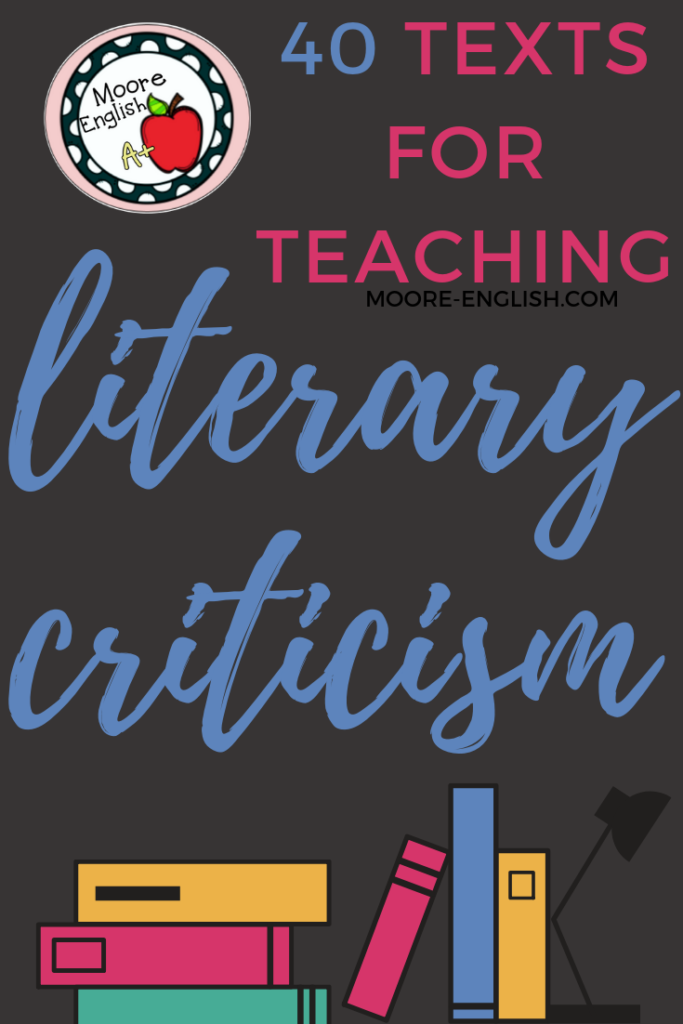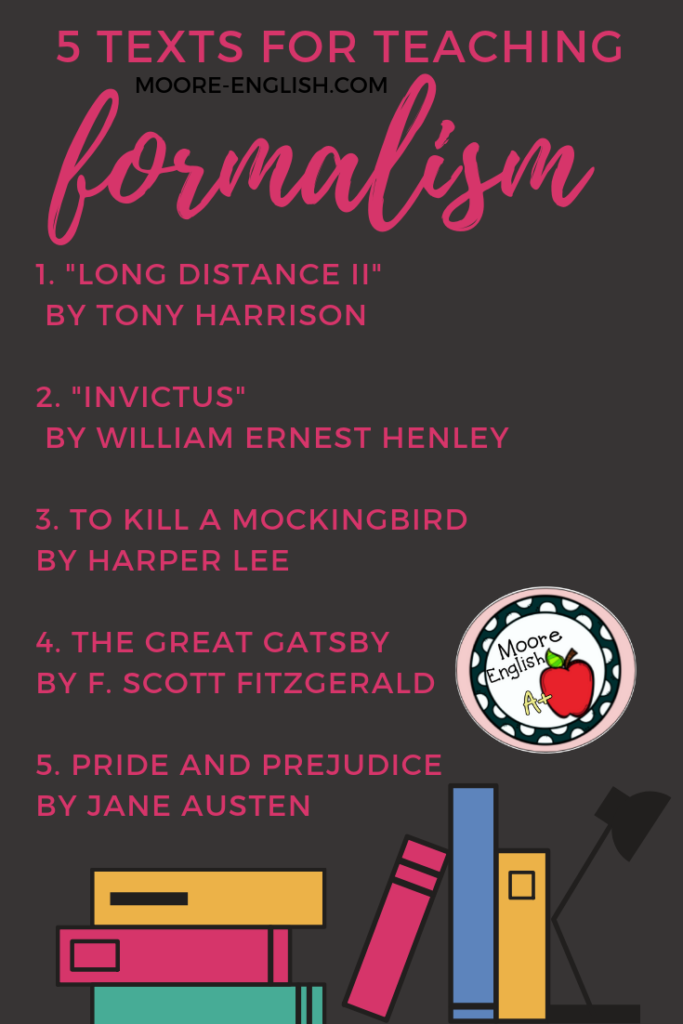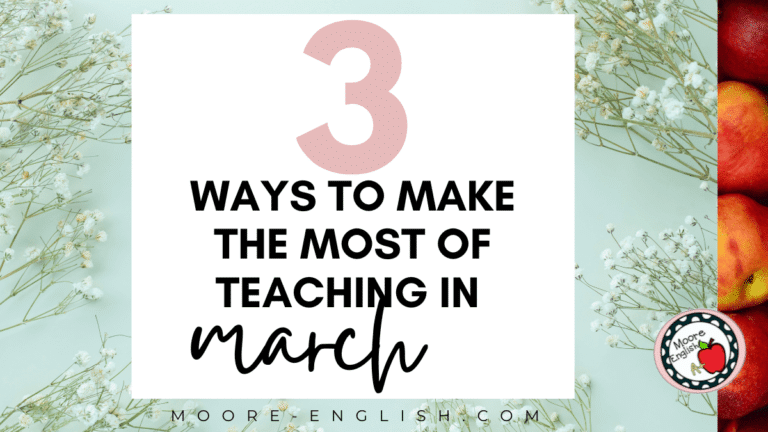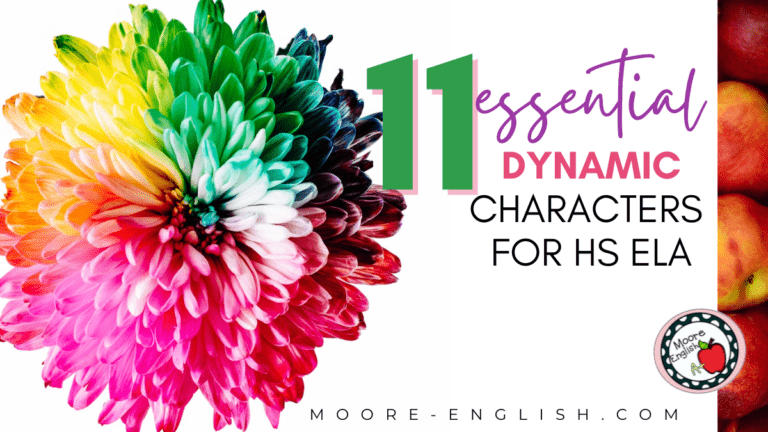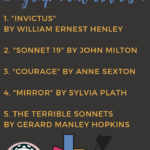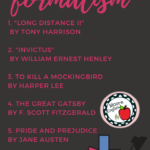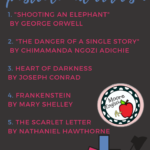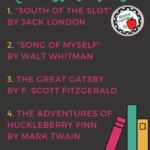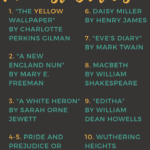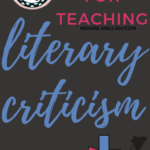This week, my juniors will make their first foray into literary criticism. In the past, I’ve written about the importance of incorporating literary criticism in secondary English. Today, I’ll share texts that are perfect for introducing literary criticism.
As you choose texts for introducing literary criticism, remember that the goal of the lesson. While you want to choose an appropriate text, you also want to choose an approachable text. And literary crit is intimidating enough without choosing a text that is too dense.
Formalist Criticism
To begin, formalist or New Criticism is all about the unified whole. So look for a text that’s every choice points to a specific author’s purpose. Of course, students don’t usually know the lit crit lingo. However, they have been doing this type of work because formalism is the default position of most literature classes. For this reason, you may only need a short story.
If you’re interested in a longer text, To Kill a Mockingbird is a great example of a unified whole. And my To Kill a Mockingbird resources are here.
Other long works for this lens include The Great Gatsby and Pride and Prejudice.
Archetypal Criticism
Without knowing it, students are often familiar with archetypes. For example, when I introduce Julius Caesar as a tragic hero, we trace those characteristics through famous figures.
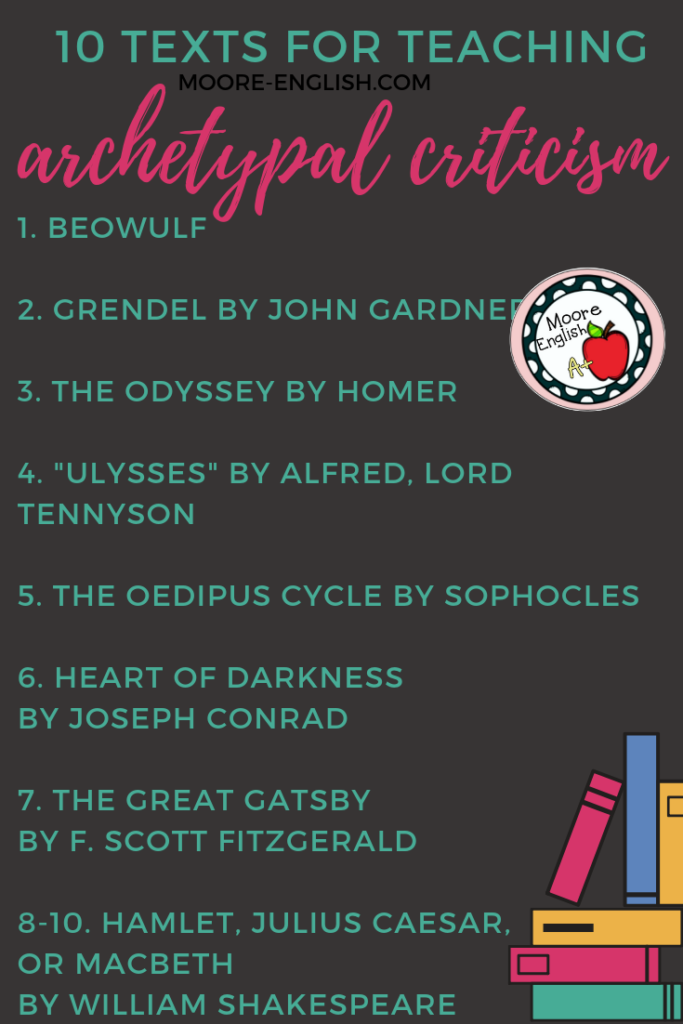
Like Julius Caesar, many of Shakespeare’s other main characters make compelling subjects for criticism. These include Hamlet and Macbeth.
Because heroes are often part of this lens, Beowulf can be a good choice. Further, this discussion gets more interesting when readers consider John Gardner’s Grendel. In discussing the interplay between heroes and anti-heroes, I value this think sheet.
Other heroes to consider are Odysseus. First, consider his role in Homer’s The Odyssey. And compare him to his portrayal in Alfred, Lord Tennyson’s “Ulysses”. Similarly, Sophocles’ Oedipus is a good candidate for this lens.
Biographical Criticism
For biographical criticism, my favorite text is Henley’s “Invictus.” First, most students predict that he’s fighting a war. However, Henley had actually lost a leg to amputation. And during his recovery, he wrote his poem. After I tell students, I ask them to reconsider the poem. To see my full plan for “Invictus,” check out Introducing Historical and Biographical Criticism.
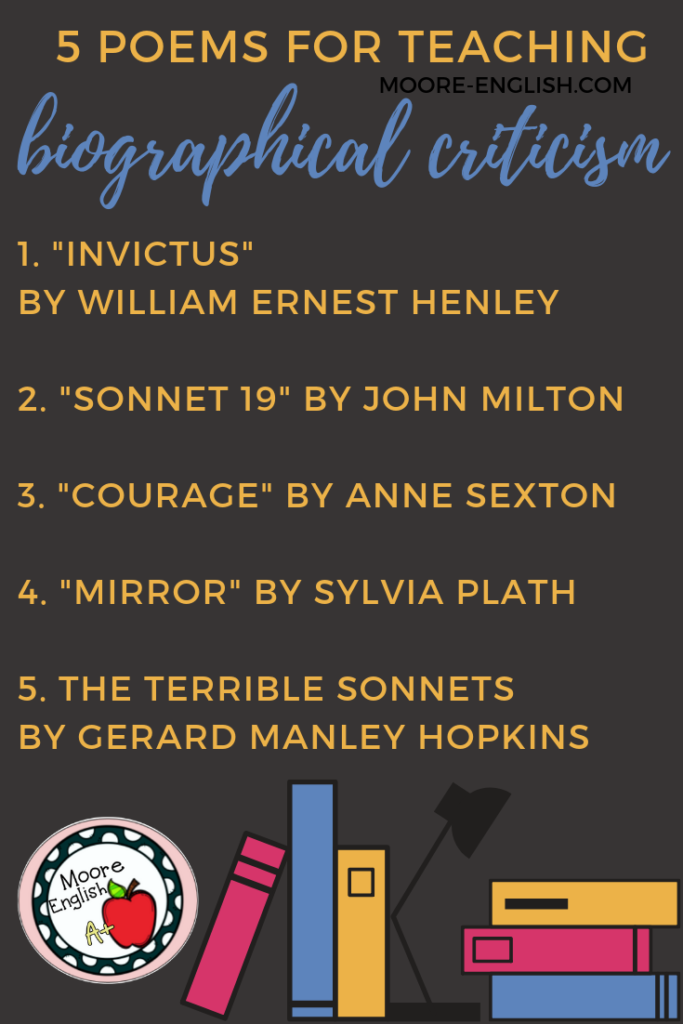
Another great text for this lens is John Milton’s “Sonnet 19: When I consider how my light is spent.” Again, I ask students to provide a close reading of the text. Usually, they find multiple interpretations of the speaker’s “light.” Then, I tell students that “Sonnet 19” is also known as “On My Blindness.” Next, I explain that Milton was actually blind. Finally, I ask students how their understanding of the poem has changed.
For short stories, try Charlotte Perkins Gilman’s “Why I Wrote the Yellow-Wallpaper?”.
In terms of drama, analyzing Arthur Miller’s “Why I Wrote The Crucible” is effective for this lens. And it transitions nicely intro historical criticism.
Historical Criticism
Like biographical criticism, historical criticism requires a little outside knowledge. The intersection of history and literature is rife for literary discussion.
Poems for this lens include:
- “Caged Bird” by Maya Angelou
- “Eden, Then and Now” by Ruth Stone
- “The Ebb and Flow” by Edward Taylor
- “The Death of the Ball Turret Gunner” by Randall Jarrell
- “Thanatopsis” or “To a Waterfowl” by William Cullen Bryant
- “Sympathy” and “We Wear the Mask” by Paul Laurence Dunbar
Beyond poetry, excerpts from Tim O’Brien’s The Things They Carried can be powerful. For example, the chapter “On the Rainy River” is compelling in its own right. And it becomes more powerful when read in the context of Vietnam.
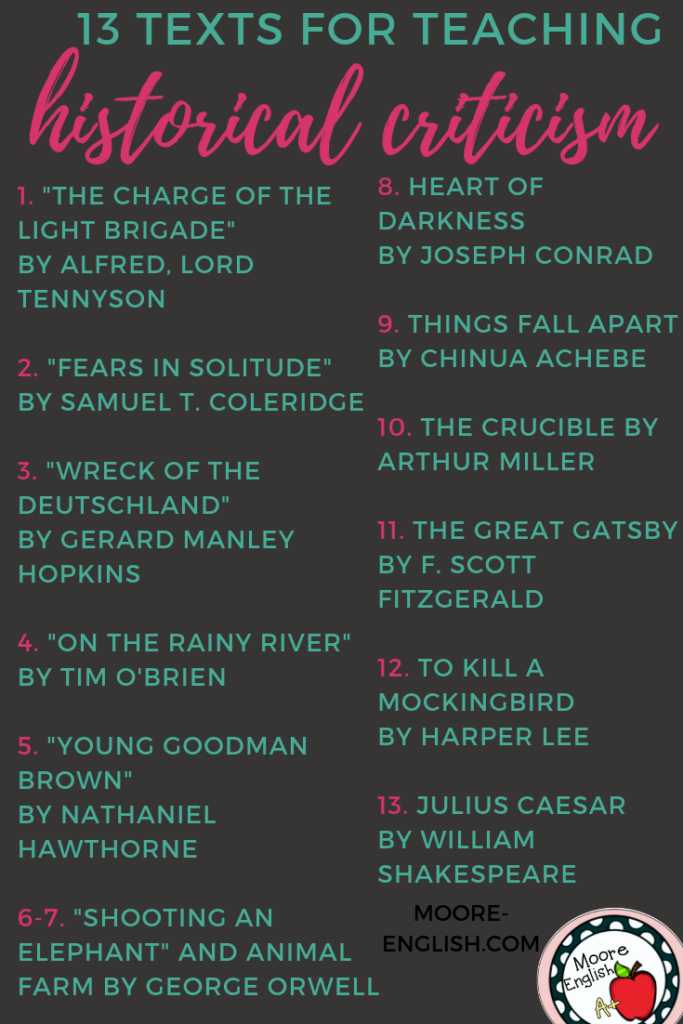
Similarly, George Orwell’s “Shooting an Elephant” is a great choice. Since there is debate on how autobiographical this essay is, this can also be a good opportunity for biographical criticism. Check out my lesson plan for “Shooting an Elephant” here.
Additionally, excerpts from Joseph Conrad’s Heart of Darkness also offer opportunities for analyzing the impact of history on literature. Other novels for this lens include Things Fall Apart, The Great Gatsby, and To Kill a Mockingbird.
In terms of drama, Arthur Miller’s The Crucible is a great option. Further, William Shakespeare’s Julius Caesar is an interesting case. There’s evidence that he wrote the play to comment on the political situation during his own time. Similarly, the plague in Romeo and Juliet provides an interesting point for analysis.
New Historical Criticism
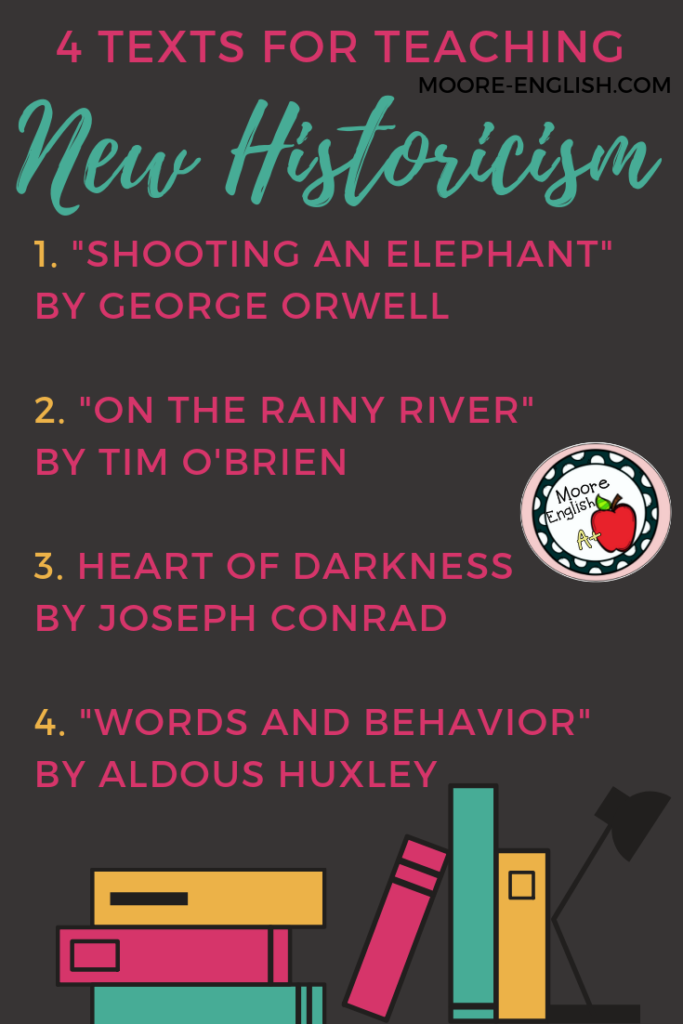
Like historical criticism, New Historicism requires some historical knowledge. However, this lens is as interested in historical “fact” as it is in the way an individual or group’s position and identities. These identifies include gender, sex, religious affiliation, socioeconomic status, etc. affect perspective. For this reason, I like to use the text we read earlier as a stepping stone.
Furthermore, Aldous Huxley’s “Words and Behavior” is a particularly compelling essay about the dangers of rhetoric. While the text is extremely challenging, it would be a great option for every type of criticism mentioned so far.
Feminist Criticism
As with other lenses, I prefer to “recycle” a text when introducing feminist criticism. For this reason, when I introduce this lens, we usually revisit an earlier text.
To extend the feminist lens, consider these titles:
- Macbeth by William Shakespeare
- “Editha” by William Dean Howells
- Wuthering Heights by Emily Bronte
- “A White Heron” by Sarah Orne Jewett
- “A New England Nun” by Mary E. Freeman
- “The Yellow Wallpaper” by Charlotte Perkins Gilman
- Pride and Prejudice or Northanger Abbey by Jane Austen
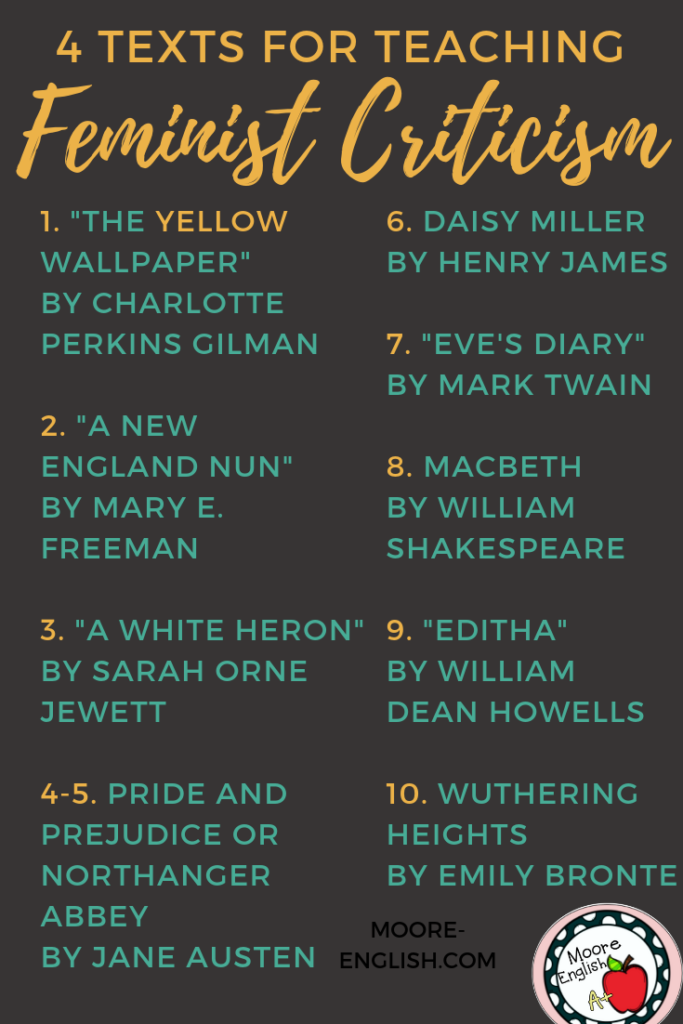
Marxist Criticism
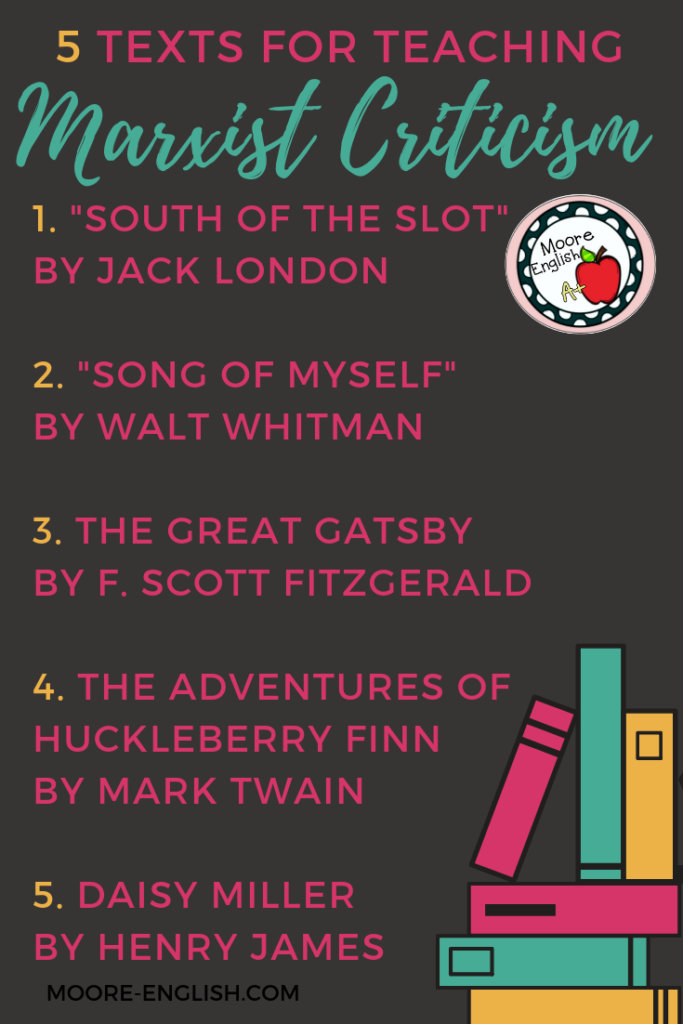
For Marxist criticism, my first choice is, again, to “recycle” a text. In this case, The Great Gatsby is an excellent option for exploring the effect of class warfare.
Another novel to consider is The Adventures of Huckleberry Finn. A novella to consider is “Daisy Miller” by Henry James.
In terms of poetry, Walt Whitman’s description of class in “Song of Myself” works well for a Marxist perspective.
For a short story, Jack London’s “South of the Slot” is a great option. However, my favorite short story for this lens is Eudora Welty’s “A Worn Path.”
Postcolonial Criticism
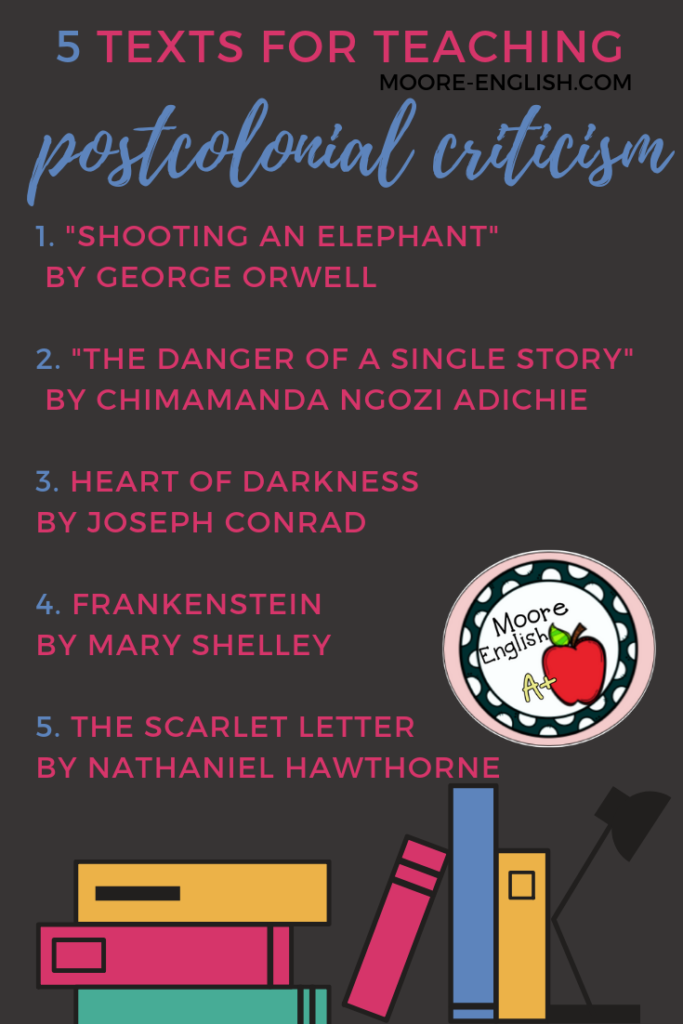
Because of its consideration of colonization and imperialism, postcolonial criticism does not apply to every text. Nevertheless, it works well with “Shooting an Elephant,” Things Fall Apart, and Heart of Darkness.
Additionally, Chimamanda Ngozi Adichie’s TedTalk “The Danger of a Single Story” provides postcolonial analysis and could itself be the subject of postcolonial analysis.
Another nonfiction text that could be a candidate for this lens is The Souls of Black Folk by W.E.B. Du Bois. First, this text analyzes the way white culture colonized black and brown bodies. Additionally, it also can be read in conjunction with Du Bois’ political values.
In terms of considering “the Other,” Frankenstein is a compelling option. First, Frankenstein’s monster is made an Other by his creator. And he becomes acutely aware of his Otherness. S

